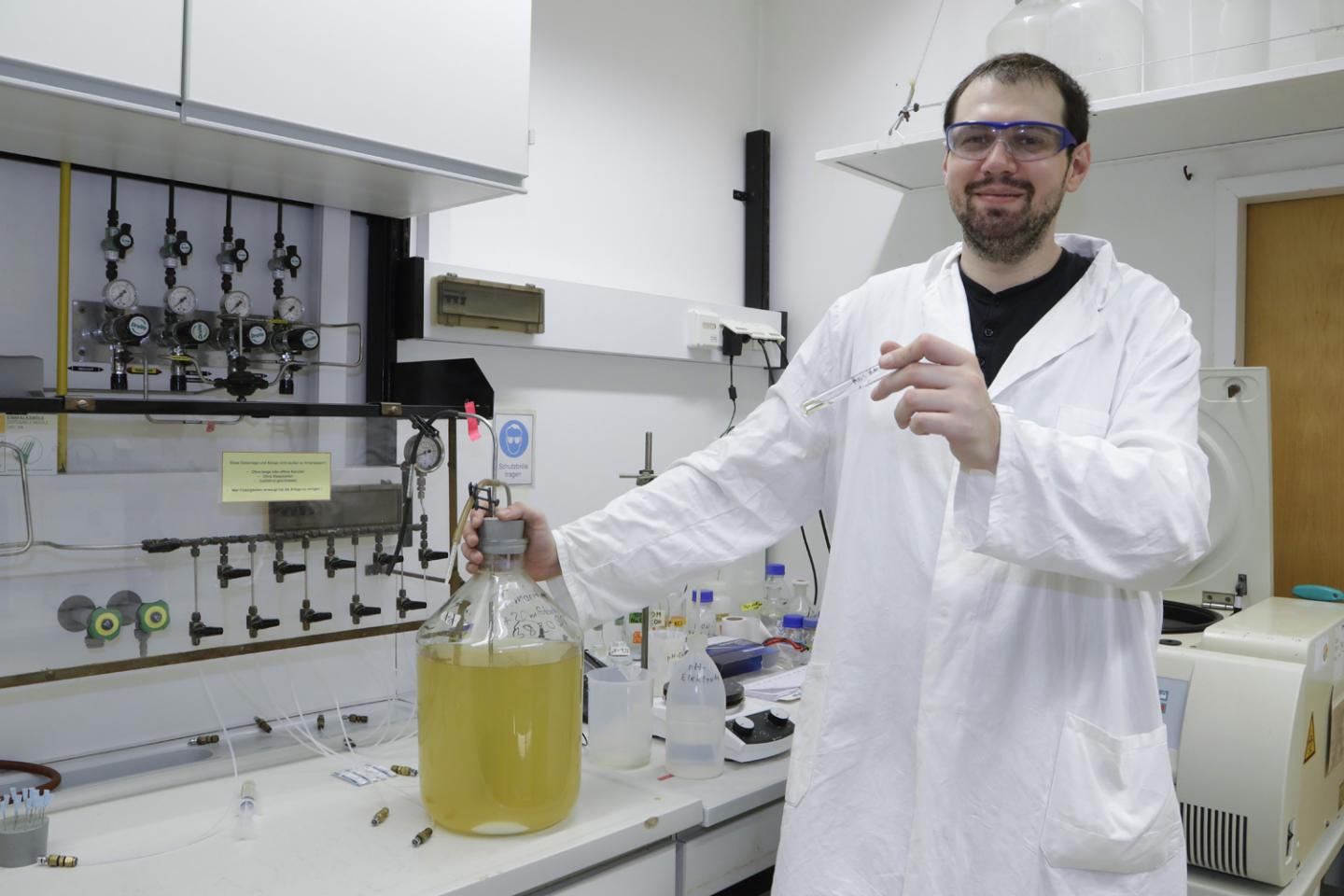How microbes in the primordial atmosphere obtained energy without oxygen

Credit: Uwe Dettmar for Goethe University Frankfurt, Germany
In the first billion years, there was no oxygen on Earth. Life developed in an anoxic environment. Early bacteria probably obtained their energy by breaking down various substances by means of fermentation. However, there also seems to have been a kind of “oxygen-free respiration”. This was suggested by studies on primordial microbes that are still found in anoxic habitats today.
“We already saw ten years ago that there are genes in these microbes that perhaps encode for a primordial respiration enzyme. Since then, we – as well as other groups worldwide – have attempted to prove the existence of this respiratory enzyme and to isolate it. For a long time unsuccessfully because the complex was too fragile and fell apart at each attempt to isolate it from the membrane. We found the fragments, but were unable to piece them together again,” explains Professor Volker Müller from the Department of Molecular Microbiology and Bioenergetics at Goethe University.
Through hard work and perseverance, his doctoral researchers Martin Kuhns and Dragan Trifunovic then achieved a breakthrough in two successive doctoral theses. “In our desperation, we at some point took a heat-loving bacterium, Thermotoga maritima, which grows at temperatures between 60 and 90°C,” explains Dragan Trifunovic, who will shortly complete his doctorate. “Thermotoga also contains Rnf genes, and we hoped that the Rnf enzyme in this bacterium would be a bit more stable. Over the years, we then managed to develop a method for isolating the entire Rnf enzyme from the membrane of these bacteria.”
As the researchers report in their current paper, the enzyme complex functions a bit like a pumped-storage power plant that pumps water into a lake higher up and produces electricity via a turbine from the water flowing back down again.
Only in the bacterial cell the Rnf enzyme (biochemical name = ferredoxin:NAD-oxidoreductase) transports sodium ions out of the cell’s interior via the cell membrane to the outside and in so doing produces an electric field. This electric field is used to drive a cellular “turbine” (ATP synthase): It allows the sodium ions to flow back along the electric field into the cell’s interior and in so doing it obtains energy in the form of the cellular energy currency ATP.
The biochemical proof and the bioenergetic characterization of this primordial Rnf enzyme explains how first forms of life produced the central energy currency ATP. The Rnf enzyme evidently functions so well that it is still contained in many bacteria and some archaea today, in some pathogenic bacteria as well where the role of the Rnf enzyme is still entirely unclear.
“Our studies thus radiate far beyond the organism Thermotoga maritima under investigation and are extremely important for bacterial physiology in general,” explains Müller, adding that it is important now to understand exactly how the Rnf enzyme works and what role the individual parts play. “I’m happy to say that we’re well on the way here, since we’re meanwhile able to produce the Rnf enzyme ourselves using genetic engineering methods,” he continues.
###
Media Contact
Markus Bernards
[email protected]
Original Source
https:/
Related Journal Article
http://dx.





